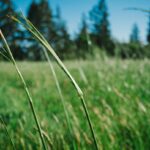Allergies and Seasonal Changes: Understanding and Managing Allergies Allergies are a common health issue affecting millions of people worldwide, especially during certain seasons. As the weather changes, allergens such as pollen, mold, and dust mites can become more prevalent, triggering allergic reactions in sensitive individuals. Understanding how seasonal changes impact allergies is crucial for effective management and maintaining a good quality of life. In this post, we will cover the types of seasonal allergens, the symptoms they cause, and effective management strategies. Seasonal allergens come in various forms, with pollen being one of the most notable. Pollen allergies, also known as hay fever or allergic rhinitis, are triggered by the fine powder produced by trees, grasses, and weeds during their reproductive cycles. Each of these plants releases pollen at different times of the year, leading to what is commonly referred to as the ‘allergy season.’ For instance, tree pollen often peaks in spring, while grass pollen is prevalent in late spring and early summer. Understanding the timing and types of pollen in your region can help you prepare and minimize exposure during peak seasons. The symptoms of seasonal allergies can be quite debilitating. Common reactions include sneezing, nasal congestion, itchy eyes, and fatigue. In some cases, individuals may also experience headaches or sinus pressure due to inflammation in the nasal passages. It’s important to recognize these symptoms early and differentiate them from common colds or flu, as this can significantly influence the approach to treatment. Identifying triggers and associated symptoms empowers individuals to seek appropriate care and adjust their lifestyles to mitigate discomfort. To effectively manage seasonal allergies, several strategies can be adopted. First and foremost, avoiding allergens when possible is essential. This can be achieved by staying indoors on high pollen count days, using air purifiers, and keeping windows closed to reduce outdoor allergens from entering your home. Additionally, regular cleaning can help minimize dust mites and other indoor allergens. Medications also play a crucial role in allergy management. Antihistamines and nasal corticosteroids are commonly recommended treatments that can alleviate symptoms. Antihistamines work by blocking histamines, the chemicals released during an allergic reaction, while nasal corticosteroids reduce inflammation in the nasal passages. Over-the-counter options are readily available, but individuals should consult with healthcare providers to find the best treatment tailored to their specific needs. Allergy shots, or immunotherapy, represent another effective long-term management strategy. This approach involves gradually desensitizing the immune system to specific allergens over time, potentially leading to significant symptom relief. For individuals experiencing severe reactions, this option may provide a more permanent solution to living with allergies. In conclusion, understanding the relationship between seasonal changes and allergies plays a vital role in managing allergic reactions effectively. By identifying allergens, recognizing symptoms, and employing management strategies, individuals can take control of their allergy experiences and improve their overall quality of life. Staying informed about seasonal trends and personal triggers empowers individuals to enjoy the changing seasons without being hindered by allergic reactions. By following the strategies outlined in this post, those suffering from allergies can navigate allergy season with greater ease, ensuring a healthier, more enjoyable time throughout the year. – 성인용품
About 3 month
Allergies and Seasonal Changes: Understanding and Managing Allergies
Allergies are a common health issue affecting millions of people worldwide, especially during certain seasons. As the weather changes, allergens such as pollen, mold, and dust mites can become more prevalent, triggering allergic reactions in sensitive individuals. Understanding how seasonal changes impact allergies is crucial for effective management and maintaining a good quality of life. In this post, we will cover the types of seasonal allergens, the symptoms they cause, and effective management strategies.
Seasonal allergens come in various forms, with pollen being one of the most notable. Pollen allergies, also known as hay fever or allergic rhinitis, are triggered by the fine powder produced by trees, grasses, and weeds during their reproductive cycles. Each of these plants releases pollen at different times of the year, leading to what is commonly referred to as the ‘allergy season.’ For instance, tree pollen often peaks in spring, while grass pollen is prevalent in late spring and early summer. Understanding the timing and types of pollen in your region can help you prepare and minimize exposure during peak seasons.
The symptoms of seasonal allergies can be quite debilitating. Common reactions include sneezing, nasal congestion, itchy eyes, and fatigue. In some cases, individuals may also experience headaches or sinus pressure due to inflammation in the nasal passages. It’s important to recognize these symptoms early and differentiate them from common colds or flu, as this can significantly influence the approach to treatment. Identifying triggers and associated symptoms empowers individuals to seek appropriate care and adjust their lifestyles to mitigate discomfort.
To effectively manage seasonal allergies, several strategies can be adopted. First and foremost, avoiding allergens when possible is essential. This can be achieved by staying indoors on high pollen count days, using air purifiers, and keeping windows closed to reduce outdoor allergens from entering your home. Additionally, regular cleaning can help minimize dust mites and other indoor allergens.
Medications also play a crucial role in allergy management. Antihistamines and nasal corticosteroids are commonly recommended treatments that can alleviate symptoms. Antihistamines work by blocking histamines, the chemicals released during an allergic reaction, while nasal corticosteroids reduce inflammation in the nasal passages. Over-the-counter options are readily available, but individuals should consult with healthcare providers to find the best treatment tailored to their specific needs.
Allergy shots, or immunotherapy, represent another effective long-term management strategy. This approach involves gradually desensitizing the immune system to specific allergens over time, potentially leading to significant symptom relief. For individuals experiencing severe reactions, this option may provide a more permanent solution to living with allergies.
In conclusion, understanding the relationship between seasonal changes and allergies plays a vital role in managing allergic reactions effectively. By identifying allergens, recognizing symptoms, and employing management strategies, individuals can take control of their allergy experiences and improve their overall quality of life. Staying informed about seasonal trends and personal triggers empowers individuals to enjoy the changing seasons without being hindered by allergic reactions. By following the strategies outlined in this post, those suffering from allergies can navigate allergy season with greater ease, ensuring a healthier, more enjoyable time throughout the year.
Preparation
undefined
Hat
undefined
Chicken
undefined
Soap
https://curtainns.com/%eb%84%a4-%ec%a0%9c%eb%aa%a9%ec%9d%84-%ec%9e%91%ec%84%b1%ed%95%98%ec%97%ac-%eb%93%9c%eb%a6%ac%ea%b2%a0%ec%8a%b5%eb%8b%88%eb%8b%a4-%ea%b3%a0%ea%b0%9d-%ed%8f%89%ed%8c%90-%ea%b4%80%eb%a6%ac%ec%9d%98/
Sausages
성인용품
$819.03
(382) 694-8695 x343
Kundemouth
4
stars –
“Allergies and Seasonal Changes: Understanding and Managing Allergies
Allergies are a common health issue affecting millions of people worldwide, especially during certain seasons. As the weather changes, allergens such as pollen, mold, and dust mites can become more prevalent, triggering allergic reactions in sensitive individuals. Understanding how seasonal changes impact allergies is crucial for effective management and maintaining a good quality of life. In this post, we will cover the types of seasonal allergens, the symptoms they cause, and effective management strategies.
Seasonal allergens come in various forms, with pollen being one of the most notable. Pollen allergies, also known as hay fever or allergic rhinitis, are triggered by the fine powder produced by trees, grasses, and weeds during their reproductive cycles. Each of these plants releases pollen at different times of the year, leading to what is commonly referred to as the ‘allergy season.’ For instance, tree pollen often peaks in spring, while grass pollen is prevalent in late spring and early summer. Understanding the timing and types of pollen in your region can help you prepare and minimize exposure during peak seasons.
The symptoms of seasonal allergies can be quite debilitating. Common reactions include sneezing, nasal congestion, itchy eyes, and fatigue. In some cases, individuals may also experience headaches or sinus pressure due to inflammation in the nasal passages. It’s important to recognize these symptoms early and differentiate them from common colds or flu, as this can significantly influence the approach to treatment. Identifying triggers and associated symptoms empowers individuals to seek appropriate care and adjust their lifestyles to mitigate discomfort.
To effectively manage seasonal allergies, several strategies can be adopted. First and foremost, avoiding allergens when possible is essential. This can be achieved by staying indoors on high pollen count days, using air purifiers, and keeping windows closed to reduce outdoor allergens from entering your home. Additionally, regular cleaning can help minimize dust mites and other indoor allergens.
Medications also play a crucial role in allergy management. Antihistamines and nasal corticosteroids are commonly recommended treatments that can alleviate symptoms. Antihistamines work by blocking histamines, the chemicals released during an allergic reaction, while nasal corticosteroids reduce inflammation in the nasal passages. Over-the-counter options are readily available, but individuals should consult with healthcare providers to find the best treatment tailored to their specific needs.
Allergy shots, or immunotherapy, represent another effective long-term management strategy. This approach involves gradually desensitizing the immune system to specific allergens over time, potentially leading to significant symptom relief. For individuals experiencing severe reactions, this option may provide a more permanent solution to living with allergies.
In conclusion, understanding the relationship between seasonal changes and allergies plays a vital role in managing allergic reactions effectively. By identifying allergens, recognizing symptoms, and employing management strategies, individuals can take control of their allergy experiences and improve their overall quality of life. Staying informed about seasonal trends and personal triggers empowers individuals to enjoy the changing seasons without being hindered by allergic reactions. By following the strategies outlined in this post, those suffering from allergies can navigate allergy season with greater ease, ensuring a healthier, more enjoyable time throughout the year.”
Florence
성인용품 성인용품 https://search.hani.co.kr/search?command=query&media=common&searchword=성인용품 https://browse.gmarket.co.kr/search?keyword=성인용품 성인용품 성인용품 성인용품 성인용품 https://curtainns.com/%eb%b0%b0%ea%b4%80-%eb%ac%b8%ec%a0%9c%ea%b0%80-%ec%b5%9c%ec%84%a0%ec%9d%84-%eb%8b%a4%ed%95%98%ec%a7%80-%ec%95%8a%eb%8f%84%eb%a1%9d-%ed%95%98%ec%8b%ad%ec%8b%9c%ec%98%a4-%ec%9d%b4-%ec%a1%b0%ec%96%b8/ 성인용품 https://www.wikitree.co.kr/search?q=성인용품 https://curtainns.com/%ec%a0%9c%eb%aa%a9-%ec%98%a8%eb%9d%bc%ec%9d%b8%ec%97%90%ec%84%9c-%eb%8f%88%ec%9d%84-%eb%b2%8c%ea%b8%b0-%ec%9c%84%ed%95%9c-%eb%8b%a4%ec%96%91%ed%95%9c-%eb%b0%a9%eb%b2%95/ 성인용품 성인용품 성인용품 성인용품 https://www.apksum.com/search?q=성인용품 성인용품 https://curtainns.com/%ec%a0%9c%eb%aa%a9-%ec%98%a8%eb%9d%bc%ec%9d%b8%ec%9c%bc%eb%a1%9c-%eb%8f%88-%eb%b2%84%eb%8a%94-%eb%b0%a9%eb%b2%95-%ec%84%b1%ea%b3%b5%ec%9d%84-%ec%9c%84%ed%95%9c-%ec%a0%84%eb%9e%b5%eb%93%a4/ 성인용품 https://curtainns.com/%ec%98%a8%eb%9d%bc%ec%9d%b8-%ec%87%bc%ed%95%91%ec%9d%84-%ec%89%bd%ea%b2%8c-%ed%95%a0-%ec%88%98-%ec%9e%88%eb%8a%94-%ed%8c%81%ea%b3%bc-%ec%9a%94%eb%a0%b9/ 성인용품 성인용품 성인용품 성인용품 성인용품 https://curtainns.com/%ed%88%ac%ec%9e%90%ec%97%90-%eb%8c%80%ed%95%9c-%ec%9d%b4%ed%95%b4%ec%99%80-%ec%a4%91%ec%9a%94%ec%84%b1/
CALLLINK





